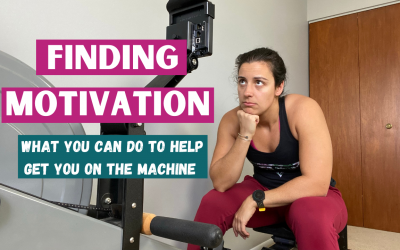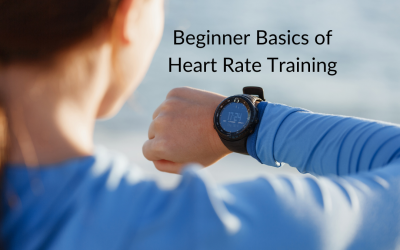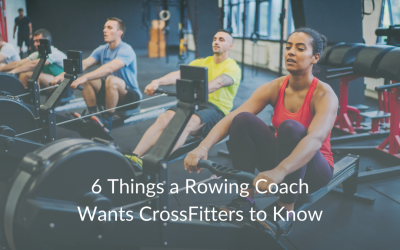A Strategy for Getting Your Best 1k Time
With the World Rowing Virtual Indoor Rowing Sprints just around the corner, I’m dropping some tips to get a better 1K time. The first bit I harp on a lot. Having good technique will help you get faster, but this doesn’t come overnight. However, there are other things you can do right now to prepare and strategize for your race. Let’s talk about it!
HAVE GOOD TECHNIQUE
Good technique will help you get more power into your stroke. When technique flies out the window, so does the power. There’s a lot that goes into having good technique, so I picked a couple of things that will help you maximize your power and get to that next stroke.
The legs account for 60% of the power in the rowing stroke. If you’re not using your legs correctly, then you’re missing out on a lot of power you could be generating. Driving through the heels is the most important bit here. If we aren’t driving through our heels, then we are driving through the balls of our feet. This is common if someone leans back at the catch. So, keep those shoulders in front of the hips when those legs drive.
The body swing generates about 30% of the power in the stroke. When there’s no body swing from 11 o’clock to 1 o’clock (and vice versa) that’s another place of missed opportunity. The biggest hurdle in getting that body swing is being able to rock forward. This can be caused by a lack of flexibility, or even as simple as sitting on the seat incorrectly. Work to get those sit bones into the seat, as this will help that body be able to rock forward.
Then, once those legs drive, swing that body back with everything you’ve got! You don’t need to lean back any farther than 11 o’clock and 1 o’clock. Any farther and you’ll most likely want to rush back up to the front of the stroke to get to the next one. That added inch of stroke length won’t be adding much of anything.
After the legs and body, the arms account for the last 10%. Since the percentage is so small, focus on having a powerful push with the legs and strong body swing open instead of trying to pull hard with the arms.
One note on the recovery. Get that handle past those knees before the knees bend. Then you’re not wasting precious time moving that handle up and down. When the chain goes all wonky, the machine can’t catch the next stroke as effectively.
KNOW YOUR 500M TT
Doing a 500m time trial (TT) will help you plan for your 1K. A time trial means that it’s one, all-out 500m piece.
A 500m piece is a long sprint, and it’s one that doesn’t require a whole lot of planning. You give it your best shot and see how long you can hang on. It’s a good measure of how hard you can go for how long. There’s typically a point in a 500m piece where you’ll hit a wall. When that happens varies for everyone, but it will happen!
Once you know your time for a single 500m piece, that average split can be used to plan for your 1K race. By split, I mean the pace /500m that you end up with. So, if you sprint and do most of your 500m piece at 2:00 /500m, hit that wall, and hold a 2:15 before it’s done, the average might be somewhere around 2:05 /500m. Let’s use this as an example.
When planning how fast to go out for a 1K piece, do NOT go out faster than your 500m TT average pace. You already know you can’t hold that pace since a 1K is now twice as long. If you have a previous 1K time, you can use that average split and your 500m average split to make a goal somewhere in between.
If you’ve never done a 1k TT before, I suggest starting your 1k race a couple of splits (3-5 seconds) above your 500m TT average. Going with our example, you may hold a 2:10 /500m to start. Over the course of the 1k, I suggest trying to hold that same split as long as possible with a manageable stroke rate. The stroke rate will be high, but not as high as it was for your 500m TT.
As you get toward the end of the 1k, you can ramp up or hang on depending on how your feeling.
KEEP A GOOD STROKE LENGTH
I see this a lot in shorter races. People want to shorten their strokes, so they aren’t using their legs as much. Sure, they are getting more strokes in. BUT they aren’t using the biggest power producer in the stroke! Their legs!
So, DON’T shorten your strokes. Get to full compression and use those legs. Cutting yourself short of 60% of your power will hurt you.
On the flip side, don’t try to lengthen your stroke by reaching or leaning back farther. Most likely you’re not used to doing this, so your body won’t be ready for it. That extra inch on either side won’t do you much, I promise. Refer back up to the earlier section about keeping good technique.
DO A START
A rowing race doesn’t start with full strokes. The flywheel needs to be at a dead stop in order to start the race. In order to get the flywheel up and moving, you can do a start.
There are a lot of ways to do a start. Every coach will have their own starting sequence. Starts typically consist of half strokes working up to a full stroke. The starting sequence I suggest is half, half, three quarter, lengthen, and then full stroke.
Starting with two half strokes gets the flywheel moving. A half stroke means the seat only comes halfway up the slide. From there, the three-quarter stroke is a little bit longer, with the lengthen stroke used to find your groove. After that, it’s time to get into full strokes.
Once you’ve done a full stroke, then take 5 strokes AS HARD AS POSSIBLE. This drives the average split down a LOT to get you off to a great start. You’ll also likely have some nervous energy, so use this to get some of that out.
After those 5 strokes, then you must settle into your goal pace. This is SUPER IMPORTANT. Don’t go as hard as possible for too long! You’ll end up hitting a wall like in a 500m TT piece. And you’ll hit it way too early and have quite a bit to go in your 1k. Aim to hit your goal pace by the time you’ve done 150m.
To settle, you reduce your stroke rate by slowing down the recovery little by little. That way you can control your split better until you reach that goal pace. Once you’ve reached that goal pace, hold it as long as possible.
KNOW YOUR STROKE RATE
While settling, be aware of your stroke rate. It can be high, but not TOO high. You’ll want it to be lower than it was for your 500m TT. It’s all about what you know you can hold for approximately 4-5 minutes.
If you are 300m into the race and think your stroke rate is too high, it’s possible to lower it without going slower than your goal pace. This is done by lengthening the recovery and driving even harder on the drive. If you try to lower the stroke rate but can’t keep that goal split, it’s up to you if you want to go back to that higher stroke rate or make that new split your goal. You’ll have to go based on how you’re feeling in the moment.
BRING IT HOME
From about 750m to go until about 250m to go will be the worst part. Mentally prepare for that middle to be about staying at that goal pace. It will get tough!
When there’s 200m left, that’s the time to bring it home. Increase that stroke rate if you want and finish it! Good luck on your 1k!
How to Find Motivation to Workout
This post is going to be a little bit different today. I'm going to be talking to you about finding motivation to get on the rowing machine. Just to be clear, this video is NOT for the person who is struggling to take a rest day. This is for you if (for example) you...
Beginner Basics of Heart Rate Training in Rowing
You may read heart rate training and think you need to start paying attention to all these numbers or buy all of the things to track your heart rate. While you can buy some gear to help you accomplish heart rate training, it’s not required. Sure, the gadgets will help...
6 Things a Rowing Coach Wants CrossFitters to Know
All right CrossFitters, I'm calling you out here. As a CrossFit level 1 trainer, I've seen so many different technique flaws and issues when it comes to rowing. I know that rowing is not something that is focused on in a WOD. However, rowing can really hurt your...



